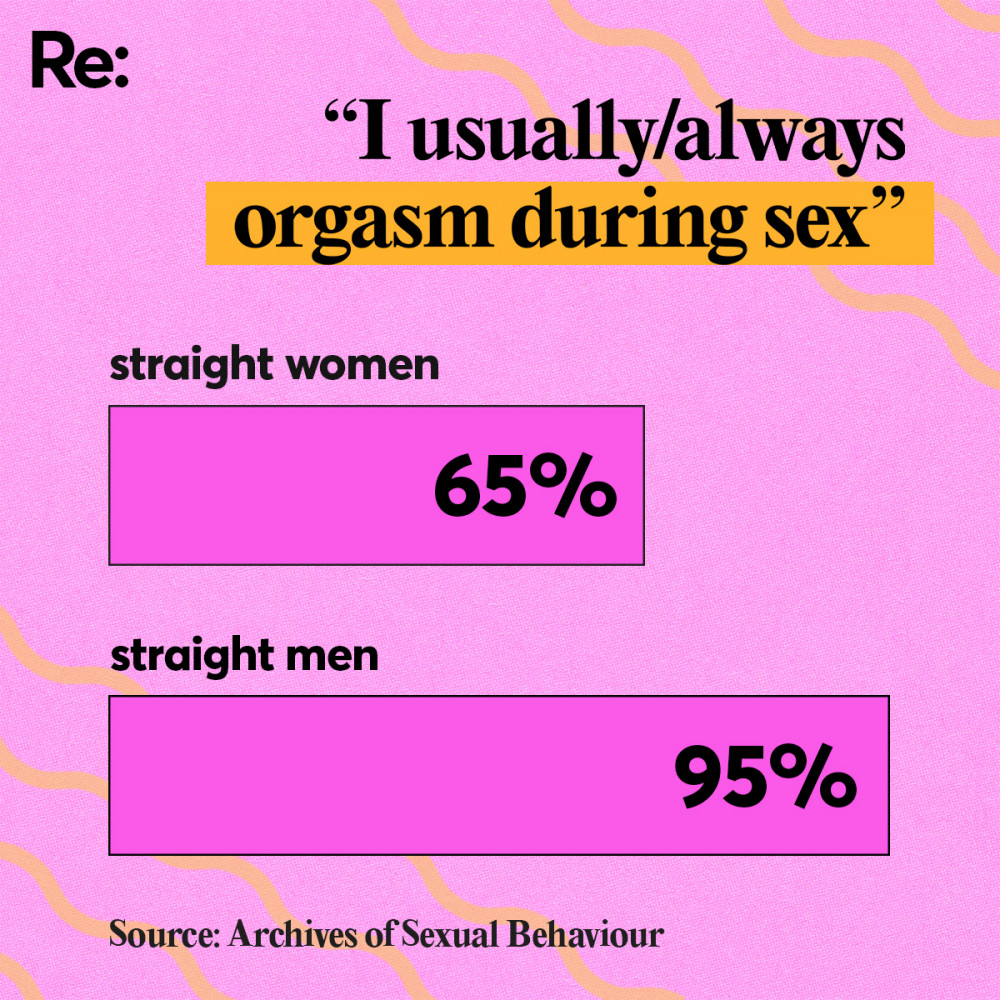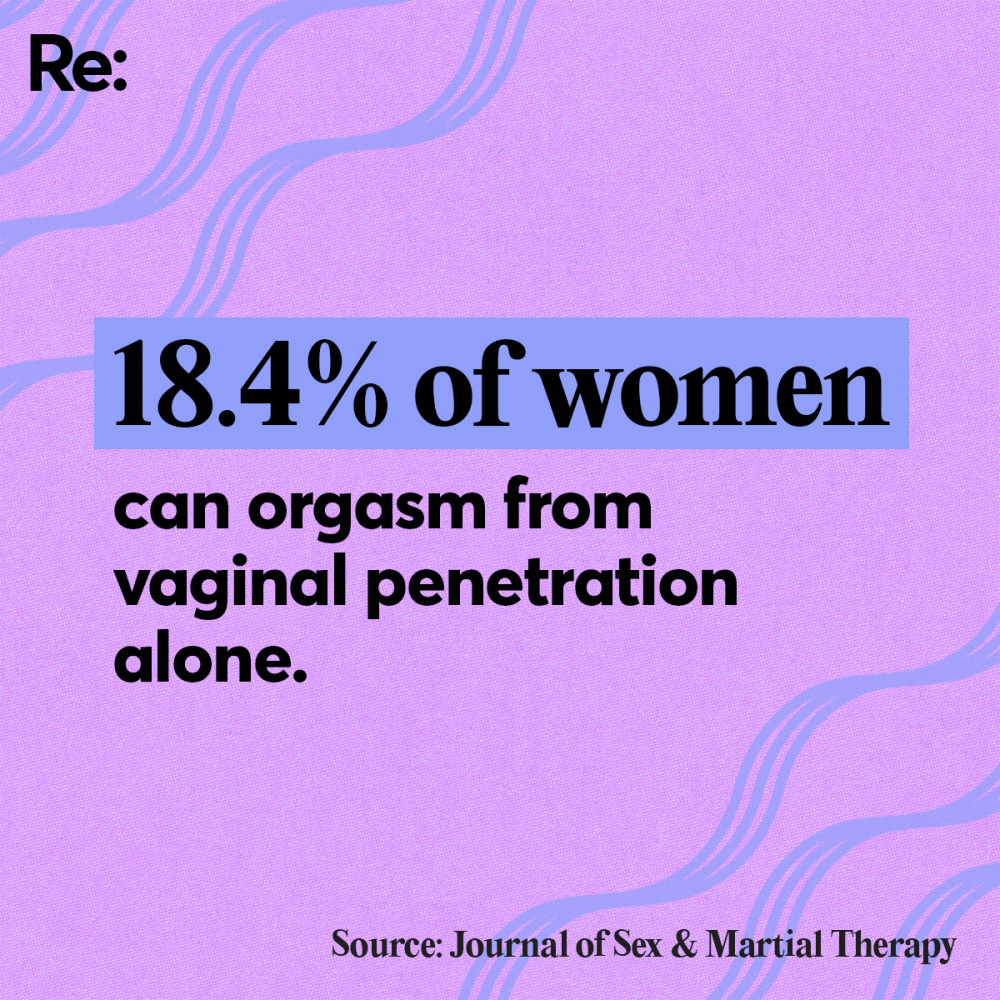By Maggie Shui
Sex can be one of the most profound joys of life. However, too many heterosexual women aren’t reaching their potential for sexual pleasure. Why is there a pleasure gap between heterosexual women and men, and how do we close it?
Arielle records all her sexual encounters in her notes app, and rates them with emojis. This way, she knows whose DMs to reply to and whose to ignore.
She notes down how attractive she found the guy, whether she came and, crucially for Arielle, whether he ate her out - indicated by a tongue emoji. The absence of a tongue emoji next to a guy’s name means he’s “going to rot in hell”. A pink heart with an arrow emoji means that she came. The pink hearts are scarce.
Arielle and her best friend Alison Zhang, a business student in Tāmaki Makaurau, have embarked on that special time in many a young woman’s life called the ‘hoe phase’. However, by this point, they’ve sussed that casual sex as a heterosexual woman too often ends in disappointment.
Alison sums it up saying, “Yeah, sex the past few years has been pretty bad.”

Arielle's notes app records
Alison is 20, the age Jia Luo, an artist in Tāmaki Makaurau, was when she began having sex. Jia says it’s only recently with her current partner that she’s fully realised her potential for pleasure: “It's taken 10 years for me to fully enjoy sex.”
“I think I really enjoyed the anticipating and wanting in the lead-up to sex. But sex itself would quite often be very disappointing in that the guys lasted minutes and I didn't get any pleasure out of the experience.”
In all of Arielle, Alison and Jia’s encounters, their sexual partners would almost always have an orgasm.
The phenomenon where heterosexual women are having less satisfying sex than heterosexual men has been termed the ‘pleasure gap’. While orgasms are not the only way to experience pleasure and satisfaction during sex, they are a useful indicator of this disparity.
Beyond Arielle’s innovative notes app system, there’s data from researchers to show the extent of this pleasure gap.
95 percent of straight men said they usually or always orgasmed during sex, according to a 2018 study published in Archives of Sexual Behaviour which surveyed 50,000 straight women and men in the US.
Only 65 percent of straight women were able to say the same. This made them the group with the lowest frequency of orgasms, behind lesbian and bisexual women, and all the men.

It’s a sad reality that should make us hot and bothered - in an angry way, not a fun way. For people who experience sexual desire, sexual pleasure can be one of the most profound joys of life. The fact that swathes of straight women haven’t unlocked their full potential for this pleasure - while straight men seem to be getting it on the regular - is frustrating and sad.
How do we close the gap? The first step is to look at why it exists in the first place.
We put the male orgasm at the centre of sex
Alison, Arielle and Jia all say that with the majority of their past sexual partners, the sexual encounter ended when, in Jia’s words, “the guy came and rolled over.”
“Literally only one guy, one out of everyone I've been with, would do other stuff with me when he finished,” says Alison. However, she acknowledges that, “sometimes, they physically can’t,” referring to the fact that, anecdotally speaking, many men are out like a light after they’ve orgasmed.
The fact remains, however, that in their experiences, sex typically ended before the women had the chance to experience any pleasure themselves, whether through orgasm or other mental and physical fulfilment. And the guy coming was seen as the pinnacle, the natural culmination, of the sexual encounter.
And while men haven’t been inclined to keep going once they’ve come so their partner can achieve pleasure, the women say they regularly continue with sex even when they’re not feeling it anymore, just so the guy would come.
“Oh my gosh, so many times,” says Arielle. “There have been times I’m just like, can you come already.”
“I think I’ve only ever told one guy to stop,” says Alison. “I was like, nah this feels weird, just stop, and he was okay with that. But a lot of the time I'm thinking, oh this is boring.”
Why are women so willing to power through with sex so that their partners can get their pleasure, even when we’re not receiving it ourselves?
“I think we're conditioned to think that sex revolves around men,” says Arielle. “If you watch porn, it's always a guy coming. You hardly see the girl coming unless you specifically look for a girl having an orgasm.”
Jia seconds this, saying, “The cumshot being the money shot - that says it all.”
Jia says the natural focus on men’s pleasure is so ingrained that for a long time, she didn’t think to question it. She says that she felt disappointed at the end of sex, “but nothing in me was urging me to ask for more. And I guess it is that internalised feeling that it is all about the guy and pleasing him, and you are the tool that facilitates that.”
“So it didn't even occur to me that I could also have an orgasm after the guy has ejaculated.”
On the flipside, if male orgasms are centred in the examples of hetero sex we see in porn and media (which is often where people see examples of what sex looks like for the first time), it means we’re also always seeing women as the objects of desire facilitating that pleasure, rather than people with desire of our own.
When you internalise that objectification, it can create a dynamic where you’re almost watching yourself from the man’s perspective when you have sex.
Jia says, “I found myself self-objectifying during sex a lot when I was younger, and wondering, oh, does my hair look good? Or is my flab gonna fall out in a not-attractive manner? And all that takes away from the pleasure of sex and being able to enjoy the moment.”
A recent TikTok trend has women literally looking at and criticising themselves through the male gaze. In the trend, women film themselves from a low angle to mimic what their sexual partners must see when they’re on top during sex. The joke is that they’re mortified to see what they look like in that position, sometimes smacking their phone away in horror. The captions are typically something like: “Cool. Never going on top ever again.”
We see the same dynamic play out in the amount of prep and grooming straight women and men put in before sex, even when it’s a casual hookup. “I put in so much effort,” Alison confesses. “I get my face done, make sure it's all shaved, wear lingerie. That shit takes time.”
In a staggeringly accurate observation, Arielle retorts that guys on the other hand, “have holey undies that say Monday on it and it’s fucking Wednesday. Like, what are you doing?”
Arielle says she’s stopped putting in as much effort into doing herself up before a hookup as she used to. Both she and Alison also say they’ve “simmered down” a bit from their hoe phase days, with Arielle declaring that she “won’t accept mediocre sex anymore.” If we look at the data collected in her notes app records, her frequency of hookups this year has gone down by 80 percent compared to last year.
Jia had her own hoe phase during her 20s, taking a “trial and error” approach to sex. One encounter that helped her realise she “wouldn’t take shit in the bedroom anymore” was a one night stand with a friend at the time.
“After we had sex, we just rolled over and laid on his bed. And in the darkness, he said, “You're on my side of the bed, MOVE.” And it was... I was rattled. It was so cold, the way he said it. I felt so sad. Like, how have I let this guy be inside me? So things like that happened. And I think they were turning points for me in realising that I don't enjoy sex sometimes. And it's my responsibility to make sure I don't have those experiences anymore.”
Drawing a boundary against bad sex is a good first step. But from there, how do we start having better sex? One answer lies in decentring men’s orgasms during sex, which also means moving away from only thinking about sex as a penis going into a vagina.
Straight people need to be queering our sex
“A friend of mine Sarita Das likes to talk about ‘queering your sex’, which is that you can try and focus on pleasure that isn't penetrative as the main part of your sexual activity,” says Jia.
When asked how important penetration (the penis-in-vagina kind) is when it comes to sex, Arielle says, “I’d rather a good tongue than an average dick, to be honest.” Alison's verdict? “It’s nice, but I only like it when there’s a build up for it. Not just boom, flip me over. Make me want it.”
Straight men, understandably, are more enthusiastic about penetration.
Nicholas*, a 21-year-old artist and photographer, says, “It’s super important to me, because I don’t get turned on by oral. It’s kind of like all or nothing. But that doesn’t mean I don’t like giving oral - I love that.”
Meanwhile Michael*, a 27-year-old musician, says, “Well, how do you define sex? Because I thought the definition of sex was penetration. In a sense, penetration is the only way to have sex as a straight male.”
It’s all good to love penetration. However, it’s helpful to realise that a penetration-focussed approach to sex can often also be a male-focussed approach to sex - because for many women, it’s not the most reliably pleasurable part of sex. A 2017 study published in the Journal of Sex & Martial Therapy found less than one in five women reported being able to orgasm from vaginal penetration alone.

“Queering your sex” is one way to move away from conventional hetero ways of having sex, and explore more deeply the myriad of other ways we can experience sexual pleasure.
Ana* (Tainui) is a mother and art therapy worker in Ōtautahi who identifies as takatāpui. She and her partner Rory*, a queer activist who runs a small non-profit organisation, have been together for three years. For them, there’s not a question of whether they come during sex, but instead how many times they’ll come in a single session.
“We lose count,” says Rory. Ana says that for them, sex ends “when we're tired, or when I've orgasmed like ten times and I can't take any more.”
Rory has only ever had queer relationships and sexual encounters. Growing up, they never watched porn and didn’t have many preconceived expectations when they started experimenting with sex. “The male gaze has never been involved,” they say, laughing. Sounds like a transcendent plane of existence.
Ana, on the other hand, came into her sexuality a little later in life and engaged in a good deal of unsatisfying heterosexual sex.
“I think queer sex is so, so different,” she says. “When you're having heterosexual sex, it's such a well-known road. It's literally just maybe five minutes of foreplay. And then penis in vagina for maybe 15 minutes, and then you're kind of done. It's so boring. It's so funny, because when we watch movies, [Rory’s] like, ‘it's not really like that is it?’ I'm like, ‘it really is’.”
“The penis-in-vagina sex is the only thing that happens. And even I find when I'm watching mainstream lesbian films, it's still the same concept. It's so weird because we don't usually use a strap-on very often because it's actually a lot of work. We enjoy pleasure in other ways. It's not just about a dick.”
“That is what, for me, is the biggest difference between heterosexual sex and queer sex, is that the penis is not centred.”
Rory adds that for queer people, “sex can be all sorts of different things. There's much more openness.”
For straight people, it’s easy to drift along with the current of what conventional hetero sex looks like, without stopping to consider what all our possibilities for sexual activity actually are, and which of those activities truly give us pleasure. We don’t realise that we don’t need to follow the rules.
Queer people, however, are already starting from a place where they’re not following the rules, by virtue of their sexual identities being considered unconventional. This prompts them to carve their own way forward, rather than following a pre-written roadmap.
Rory says, “Most queer folk that I've been with have thought about their relationship with sex and sexuality in a way that heterosexual people don't have to because for them it's just, well, this is how it is.”
And for Ana and Rory, through that deep thought and exploration of their sexuality has come beautiful, ten-orgasms-in-one-session sex.

So what can queering our sex look like? What can moving beyond just penis-in-vagina sex look like (outside the obvious of oral and playing with the clit)?
Ana and Rory say that when they have sex, there’s no central fixed point they’re working towards - such as a male orgasm, as a completely random example.
“We might spend like two or three hours fucking, and there will be a sort of swapping of who’s giving and who’s taking, or whatever words you want to put around that,” says Rory.
“One of my favourite things is literally just skin touching in non-genital areas, just tracing fingers along places where fingers don't usually find themselves,” says Ana. “I'm a fat person and allowing somebody to touch me in some really intimate places on my body is something that is only for people who I can be vulnerable with.”
Rory adds that you can also try touching in sexual places, without involving penetration, and surprise yourself with how pleasurable it is.
“People think that it's really hard to make folk with vulvas come but actually, I have both come and made other people come from simply playing with a nipple in the right way. And that’s exploring what makes your partner excited. Some people are really sensitive behind the ear, or some people's wrists are very sensitive.”
Jia, meanwhile, advocates for the joys of kissing. “Kissing is very underrated. People think that kissing is just foreplay. But you can kiss for so long, and it's very pleasurable. And it doesn't mean that you don't feel anything in your nether regions either. It's a whole body experience.”
Sex includes preheating the oven
Ultimately, these activities alone might not give you the sexual release you’re looking for. However, they play a crucial step in what Jia calls “preheating the oven” so that by the time you do go for the clit or the vagina, you are raring to go.
Jia elaborates on the analogy by explaining, “Men are like microwaves. You turn it on and it’s like, bam, your potato is cooked. Women are like ovens in that they need to be preheated, you need time. It’s not something that you just rush into.
“I think when the focus is on the male orgasm, it speeds things up to a point where women can't catch up. And so the male partners in a straight relationship need to take responsibility to honour the timings of female sexuality and realise it’s not always about them.”
In a sense, sex doesn’t begin when a penis enters a vagina or even when sex partners get into bed together. The “preheating the oven” begins when you put a hand on the other person’s thigh on the drive home, or when you send a playful text during your lunch break.
And, Jia adds, taking time to explore your partner’s responses and see what makes them tick instead of rushing into penetrative sex is not a chore - it’s a fun thing to do.
“It prolongs the pleasure. What’s not to like about that?”
All this said, there is potential for women to gain more pleasure from penetrative sex as well. We don’t want penetration to always be the central focus of sex, but that’s not to say it can’t feel good mentally and physically, and make you feel deeply connected to your partner.
Jia for a long time thought she was part of the four in five women who can’t come from penetration - until she had a breakthrough.
“I realised that I could touch myself as I was being penetrated, which, for whatever reason, never occurred to me... Actually, I can see why I would think that because men are given so much power in that they are seen as the giver of orgasms. And it takes all responsibility away from the female partner in directing her own pleasure. So, when you have that mindset of he will bestow this orgasm on me, you kind of go hands free. You give up your control.”
From there, after some further experimentation, she was able to come from penetration alone. Here’s her advice:
“Get your guy to just very incrementally shift his penetration angle. Any position, but just gradually shift the degrees. If you play with those angles and you get to a sweet spot, you should be like, do not move! Keep doing it until I tell you to stop. And if you feel like, mentally, you can name the position and what the configuration was, you can recreate that again and again. You can be like, babe, that position was so good for me. I want you to do it again.”
If you’ve got some time and really want to crack this, this study published just two weeks ago explains four specific techniques - angling, rocking, shallowing and pairing - that can help women orgasm from penetration.
By putting our foot down when it comes to bad sex, learning from our queer friends and putting an end to always “following the phallus” as Rory terms it, we can expect to see a lot more pink heart with arrow emojis in our notes apps. Don’t settle for less. ?
*Names have been changed
This story is part of Re:'s Pleasure Week. See here for more stories about pleasure and sex, from teaching straight men the joys of stimulating their anus to kākāpō sex helmets.
Related stories:
Sex toy reviews: things that go buzz
Why are straight men scared of their own butts? | School For Straights